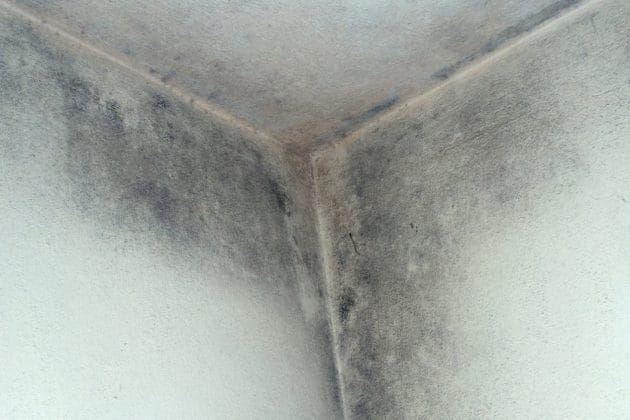
Call our team
01484 442420Find An Applicator
Menu
close

Damp and mould are unsightly, unhealthy problems that blight homes across the UK. But why exactly do you get them? Understanding the causes of damp and mould can be critical to eliminating them, which is why we’ve put together a simple guide to answer that question.
First and foremost, it’s worth explaining the relationship between damp and mould. Mould is a fungus that grows in damp, moist environments. It’s made up of hyphae, which form an organic material known as a mycelium. Once established, that material will continue to grow and thrive.
Put simply, if damp is left untreated, it will generally allow mould to grow. While damp itself can trigger respiratory issues, mould will no doubt amplify them.
If you’re asking, ‘why do you get damp and mould?’, the real answer is the root cause of the damp. In that respect, there are three possibilities – rising damp, a leak, or excessive humidity inside your home.
Firstly, rising damp refers to the process of moisture being absorbed by small openings in your building materials and then rising through the wall itself – known as capillary action. It occurs when walls have an insufficient (or non-existent) damp-proof course. Rising damp can usually be identified when damp occurs exclusively at the bottom of your walls, up to a metre from the ground.
The next possibility is a leak in your home. That could be a leak in your roof, allowing water to enter from above. Or it might be down to a break in your brickwork’s pointing, leading to water ingress through your walls. In some cases, damp can also be down to a leak inside your home, such as from your bathroom or kitchen appliances.
Finally, there’s the moisture that occurs naturally within your home. From cooking and boiling a kettle to showering and bathing, water vapour is released by various day-to-day activities in your home, which increases the amount of moisture in the air – otherwise known as humidity.
If your ventilation isn’t sufficient, that moisture will become trapped inside and eventually draw to cold surfaces like walls and windows. For windows, that’s means condensation forming. For walls, it means damp patches, and eventually, mould developing.
Now we’ve tackled why you get damp and mould, it’s time to learn how to stop them. That ultimately depends on the initial source of your damp. Rising damp can usually be eliminated with a damp-proofing injection, while leaks can be remedied by repairing your roof, walls, guttering, pipework or faulty appliances.
However, if you’re dealing with damp and mould because of moisture levels inside your home, you’ll need to:
CorkSol SprayCork is a moisture-resistant coating which can be used to damp-proof internal walls for years to come. A thin coating of the cork-based solution will stop damp and mould developing and prevent the health complications that come with them.
Because it’s made with cork, it also has the added benefit of thermal insulation, so it will be easier to keep your home warm in the long run. To find out more or get a quote from a local Corksol applicator, simply contact our team.
"*" indicates required fields